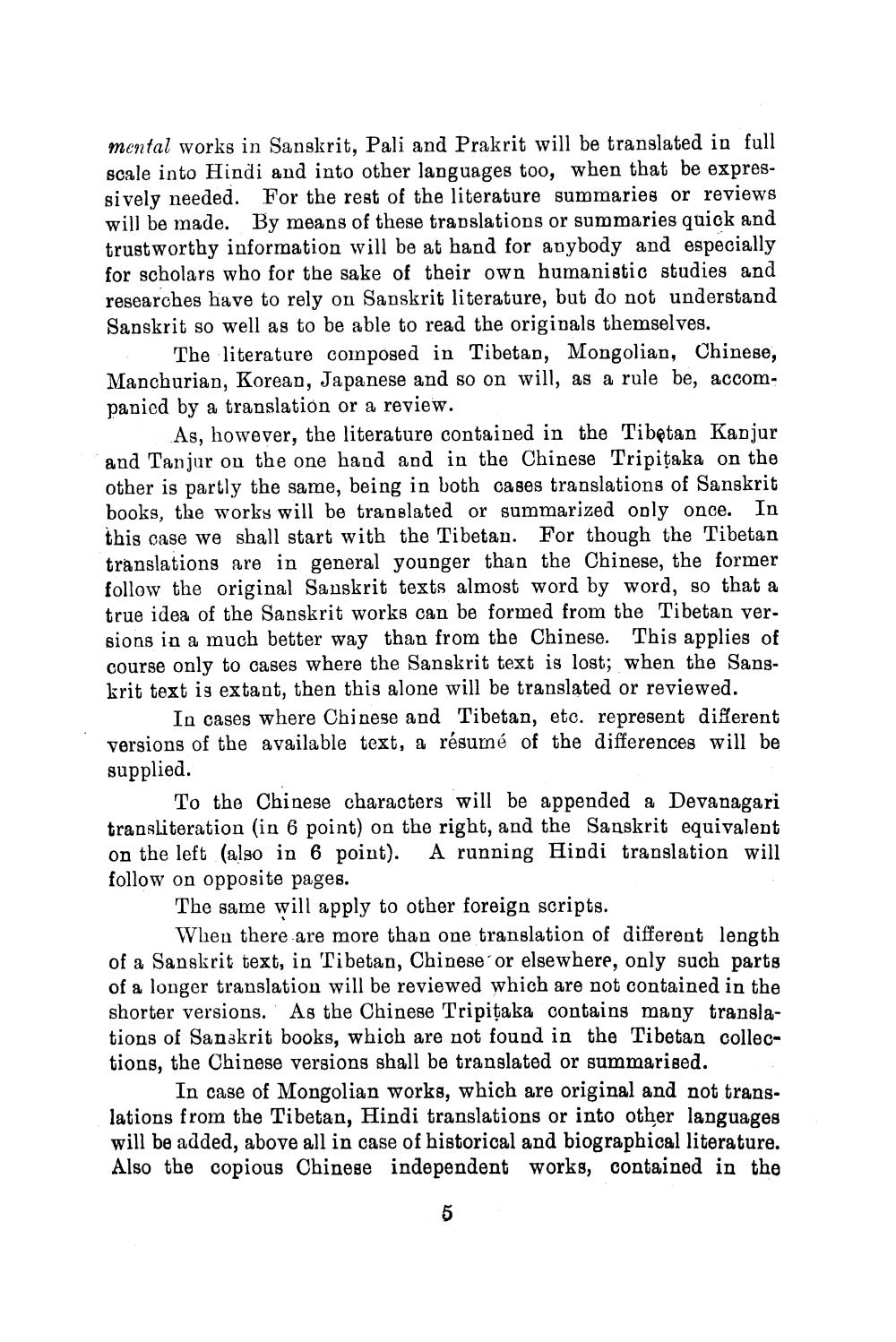________________ mental works in Sanskrit, Pali and Prakrit will be translated in full scale into Hindi and into other languages too, when that be expressively needed. For the rest of the literature summaries or reviews will be made. By means of these translations or summaries quick and trustworthy information will be at hand for anybody and especially for scholars who for the sake of their own humanistic studies and researches have to rely on Sanskrit literature, but do not understand Sanskrit so well as to be able to read the originals themselves. The literature composed in Tibetan, Mongolian, Chinese, Manchurian, Korean, Japanese and so on will, as a rule be, accom, panied by a translation or a review. As, however, the literature contained in the Tibetan Kanjur and Tanjur on the one hand and in the Chinese Tripitaka on the other is partly the same, being in both cases translations of Sanskrit books, the works will be translated or summarized only once. In this case we shall start with the Tibetan. For though the Tibetan translations are in general younger than the Chinese, the former follow the original Sanskrit texts almost word by word, so that a true idea of the Sanskrit works can be formed from the Tibetan versions in a much better way than from the Chinese. This applies of course only to cases where the Sanskrit text is lost; when the Sangkrit text is extant, then this alone will be translated or reviewed. In cases where Chinese and Tibetan, etc. represent different versions of the available text, a resume of the differences will be supplied. To the Chinese characters will be appended a Devanagari transliteration in 6 point) on the right, and the Sanskrit equivalent on the left (also in 6 point). A running Hindi translation will follow on opposite pages. The same will apply to other foreign scripts. When there are more than one translation of different length of a Sanskrit text, in Tibetan, Chinese or elsewhere, only such parts of a longer translation will be reviewed which are not contained in the shorter versions. As the Chinese Tripitaka contains many translations of Sanskrit books, which are not found in the Tibetan collections, the Chinese versions shall be translated or summarised. In case of Mongolian works, which are original and not translations from the Tibetan, Hindi translations or into other languages will be added, above all in case of historical and biographical literature. Also the copious Chinese independent works, contained in the




